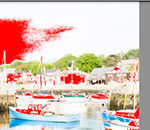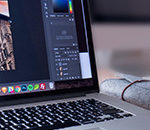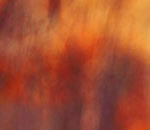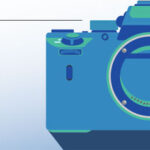Hadouken photography is a case of life imitating art. It’s named after the “Street Fighter” video game series and aims to portray larger-than-life battling with a virtual aesthetic. Hadouken photography is shot using the levitation technique. The distinguishing feature separating hadouken from other action-oriented photography is that it is not attempting to mirror a real fight so much as faithfully model a “Street Fighter” battle. More simply, one model is usually “attacking” the other and sending them flying through the air:
Alamby and Kai W from DigitalRev TV demonstrate a number of techniques to pull this off. In terms of the content of the picture, they dictate that the expression of the models should evoke the power of the fight; for example, if one is being held aloft by a “Darth Vader choke grip,” their face should be wide-eyed with terror while the rest of their body seems to hang uselessly.
Kai W gets a feel for how his body would react to a rehearsed kick or magical blast by jumping several times and correcting his positioning. Compared to Alamby, his limbs are pointed in the opposite direction of the force, and in most of the shots he gives a much greater impression of actually being hit.
The actors play an important role, but so do the camera settings. The duo gives some good suggestions, such as adjusting the shutter speed to remove or allow blur to give the impression or motion or suppress it.
If the goal is to suppress motion, it’s best to take the picture while the model is “at rest” in the air, at the height of their jump. If you’re going for a strictly “Street Fighter” image, then having the fighters pose in front of a background that’s not too varied (such as a wall) can give an authentic “Street Fighter” backdrop that doesn’t draw attention away and can emphasize a model’s movement even more.
Like This Article?
Don't Miss The Next One!
Join over 100,000 photographers of all experience levels who receive our free photography tips and articles to stay current:







Leave a Reply